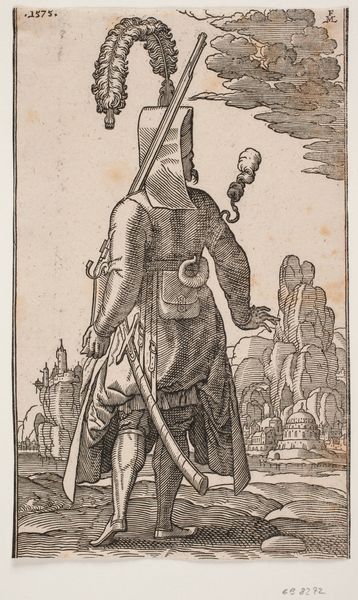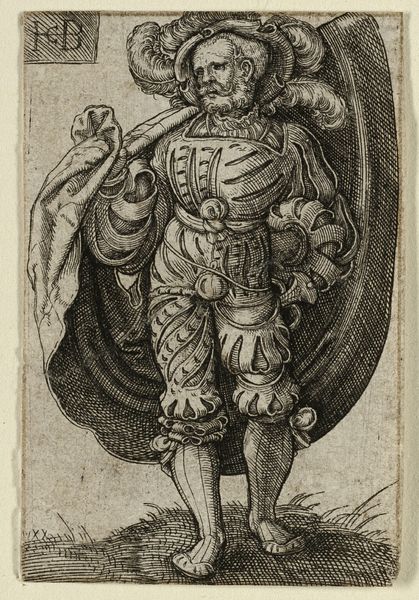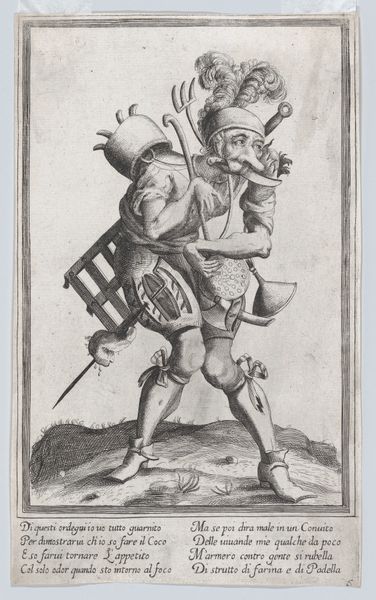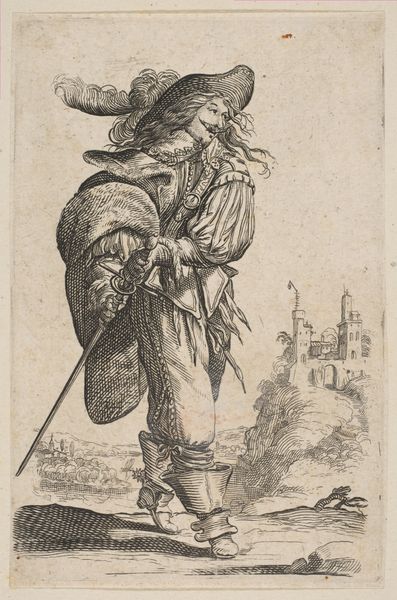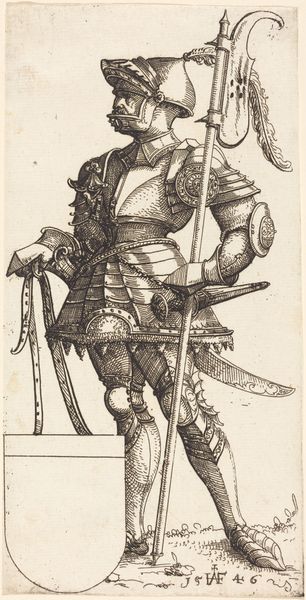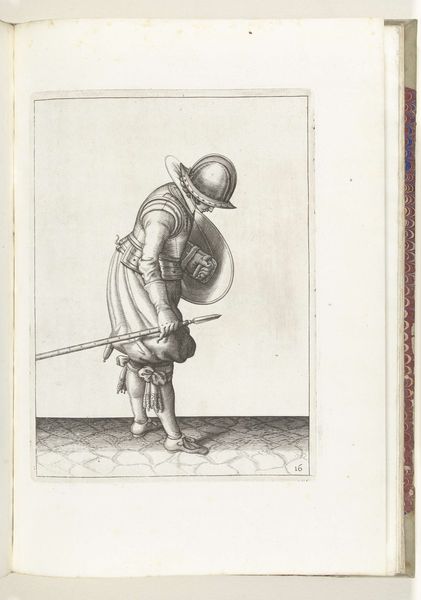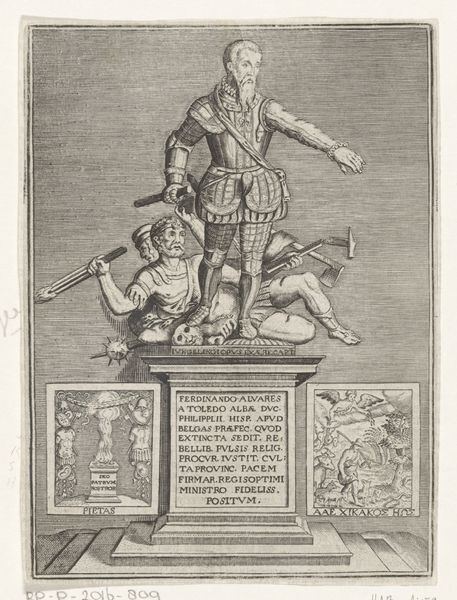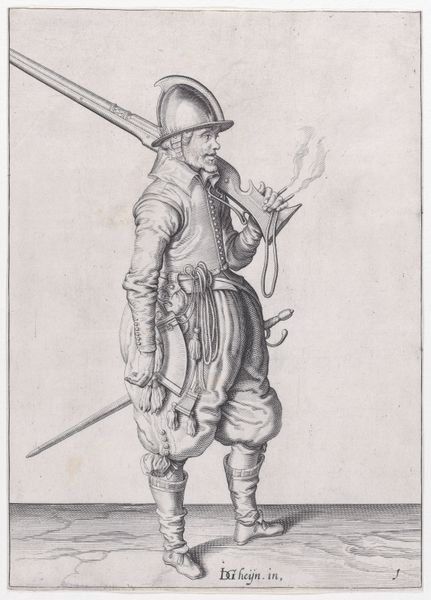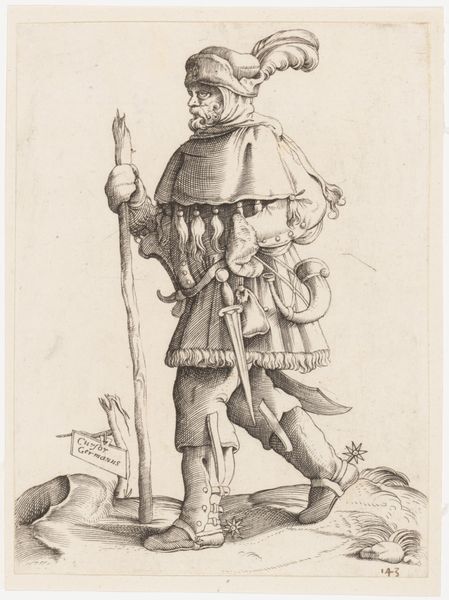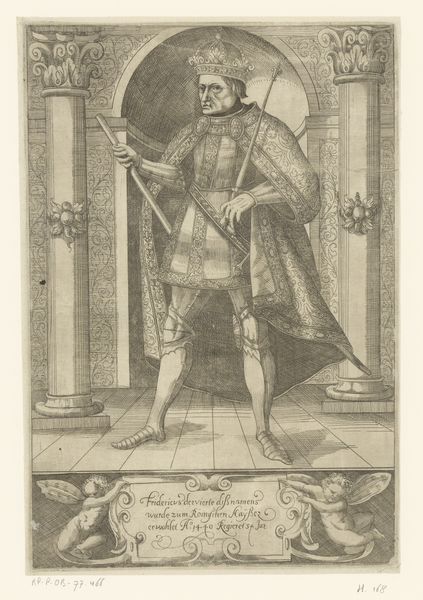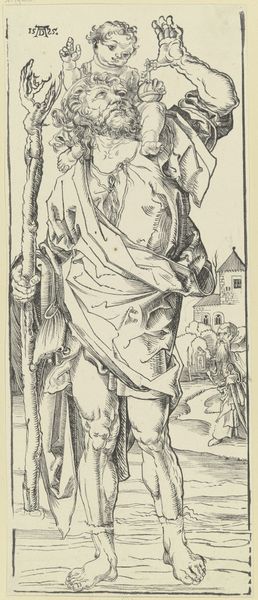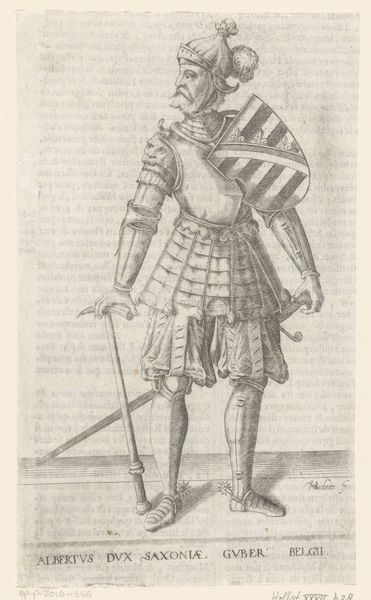
German Soldier Standing with Flag (recto) and German Soldier Marching with Flag (verso) from Wappen des heiligen römischen Reichs Teutscher Nation, plate 47 from Woodcuts from Books of the XVI Century c. 1545 - 1937
0:00
0:00
drawing, print, paper, woodcut
#
drawing
# print
#
figuration
#
paper
#
woodcut
#
history-painting
#
northern-renaissance
Dimensions: 219 × 144 mm (image, recto); 218 × 144 mm (image, verso); 300 × 193 mm (sheet)
Copyright: Public Domain
Curator: Here we have a woodcut print dating circa 1545, created by Monogrammist I.K., and aptly titled, "German Soldier Standing with Flag." I find the texture created by the medium, especially in the figure's garments, quite remarkable. Editor: It does possess a rather bold graphic quality. But the soldier himself… he’s somewhat weighed down, almost apologetic. His stance lacks triumphant energy. I wonder what that says about the iconography of power here. Curator: Consider the labor involved in producing such an image, particularly at that time. Woodcuts demanded skilled artisans to carve the designs into wooden blocks, a laborious task. And printing, even simple black-and-white prints like this, required considerable time and material resources. Editor: True, but that flag held aloft seems more of a burden than a banner of victory. The castle looming in the background, along with the man's stern facial expression… It could symbolize something beyond military might, perhaps the weight of responsibility, or even anxiety regarding the Holy Roman Empire? Curator: That tension between craft and message is compelling. The controlled lines contrast with the grandeur typically associated with depictions of soldiers. Were these prints circulated widely? Were they aimed at bolstering morale, or did they perhaps capture some existing doubt among the populace? Editor: It’s worth looking at how flags were treated generally in similar depictions from this period. What’s unique here? Flags are devices not just to show allegiance, but to unite symbolically. This feels more individual and pensive. Almost mournful, really. Curator: The level of detail in the soldier's clothing does strike me; all those meticulous X’s along his sleeves and legs... It would have taken painstaking effort to cut away the surrounding wood. Each material decision would suggest specific societal pressures related to luxury and the demands of artistic production in sixteenth-century Europe. Editor: Looking closely, you see the ground isn't smooth either, but uneven. To me it introduces an element of vulnerability and instability. It all points to a rather poignant statement on military life and perhaps even duty, which seems quite novel for this type of artwork. Curator: This image reveals the interplay between manual labor and intended message so distinctly, that it is quite unique. It truly emphasizes both the economic factors of its creation, and the personal statement within its lines. Editor: Yes, this piece urges us to remember that, beyond grand symbols, lie complex personal and societal sentiments—a thoughtful perspective offered in this singular print.
Comments
No comments
Be the first to comment and join the conversation on the ultimate creative platform.
